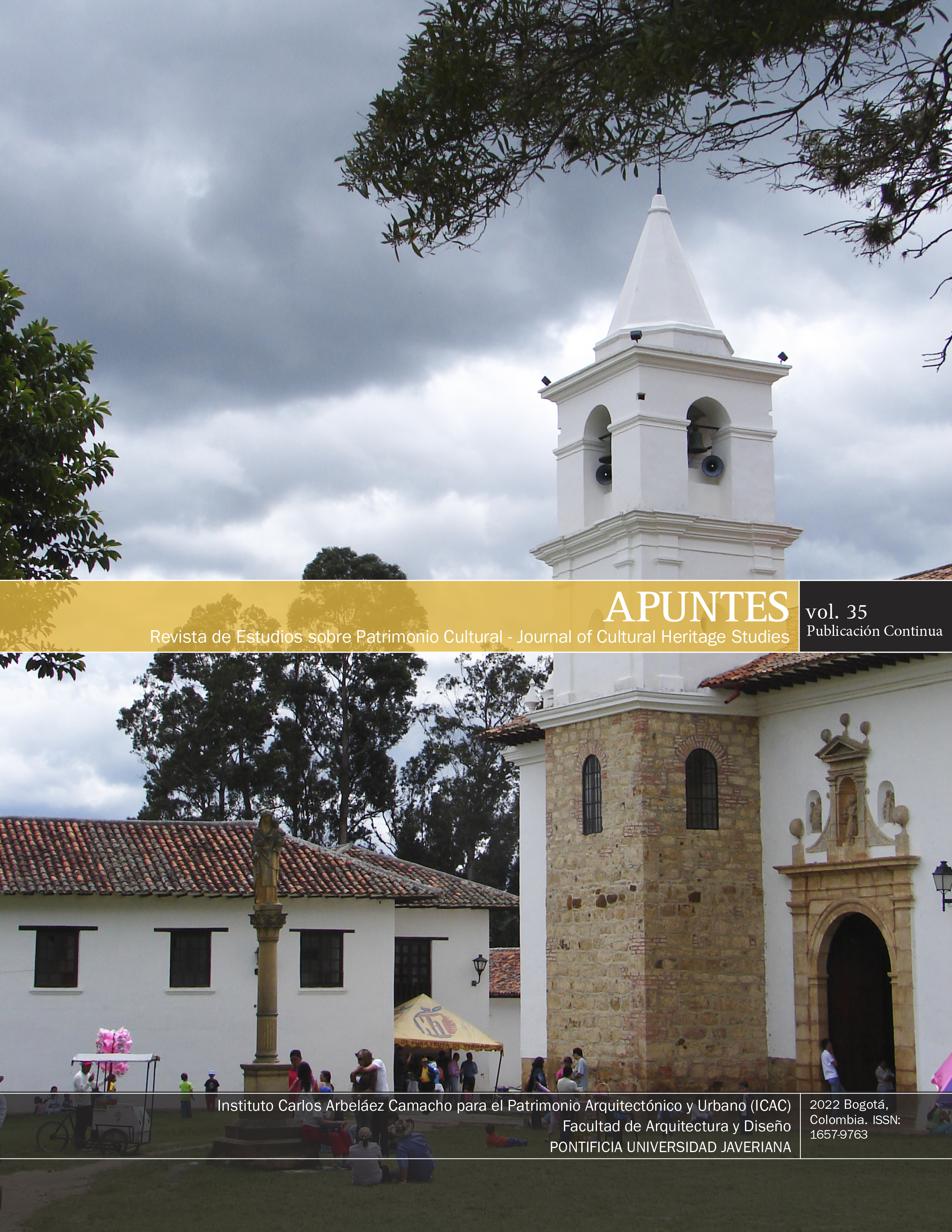Resumen
La problemática reduccionista en el campo de la valoración del patrimonio cultural inmueble, que deviene de la llamada conservación oficial, pone en evidencia la condición axiológica de la relación sujeto valorador y objeto valorado, y la urgente necesidad de una complejización fenomenológica de aquella. Esto, para el caso del presente ejercicio encuentra el norte y la claridad del recorrido epistemológico, heurístico y hermenéutico en la filosofía. Es en este territorio donde el planteamiento de una investigación con este horizonte descubre la esencia, el sentido, el contenido y la metodología que ofrece el debate entre axiología y teoría de la percepción, donde la experiencia del inmueble patrimonial se complejiza física y metafísicamente, al situarse en una profunda y humana experiencia del mundo. Cuerpo espacialmente ubicado (sujeto) en, frente y desde el espacio patrimonial (objeto), memoria, imaginarios, representaciones, intencionalidad, interrogan la dimensión pasada, presente y futura del sentido por la vida. Finalmente, el ejercicio ofrece comprensiones que posibilitan y develan territorios inexplorados del pensamiento patrimonial, de su sentido, pero sobre todo de su metodología
Aristóteles. (1967). Tratado de la sensación y de las cosas sensibles. En Obras completas (tomo III). Bibliográfica Omega.
Ferro de la Sota, H. (1998). Axiología en la conservación de monumentos. Colección Nuevo Siglo – Universidad de Guanajuato.
Frondizi, R. (1987). ¿Qué son los valores? Fondo de Cultura Económica.
García Moreno, B. (2016). Lógicas de la arquitectura: precisiones críticas al contextualismo en Pepper, Rossi y Mumford. Universidad Nacional de Colombia.
---------------------------. (2010). Experiencia, imagen y arquitectura: el camino de Bergson. Ensayos: Historia y Teoría del Arte, (10), 6-35.
Hesselgren, S. (1989). El hombre y su percepción del ambiente urbano. Noriega Editores, Editorial Limusa.
Korn, A. (1948). Apuntes filosóficos. Editorial Claridad.
Merlau-Ponty, M. (1993). Fenomenología de la percepción. Planeta Agostini.
----------------------------. (1964). La fenomenología y las ciencias del hombre. Editorial Biblioteca Nova.
---------------------------. (1963). La estructura del comportamiento. Biblioteca Hachette de Filosofía.
--------------------------. (1964). Signos. Seix Barral.
Riegl, A. (1987). El culto moderno a los monumentos. Editorial Antonio Machado.
Roth M. L. (1993). Entender la arquitectura. Editorial Gustavo Gili.
Tello Fernández, M. I. (2013a). Intervención en patrimonio. Colección Apuntes de Clase No. 96. Ediciones Unisalle.
------------------------------------. (2013b). El papel de la representación digital en la valoración integral del patrimonio inmueble. TRAZA, 1(7), 96-123.
-----------------------------------. (2006). Cultura y patrimonio cultural inmueble: su valoración, conservación y sostenibilidad integral. Revista de la Universidad de La Salle, (41), 73-78.
Yory, C. M. (2002). Del monumento a la ciudad, el fin de la idea de monumento en el nuevo orden espacio-temporal de la ciudad. Editorial CEJA.
-----------------------. (1999). Topofilia o la dimensión poética del habitar. Editorial CEJA.
Zevi, B. (1967). Saber ver la arquitectura. Gedisa.

Esta obra está bajo una licencia internacional Creative Commons Atribución 4.0.


